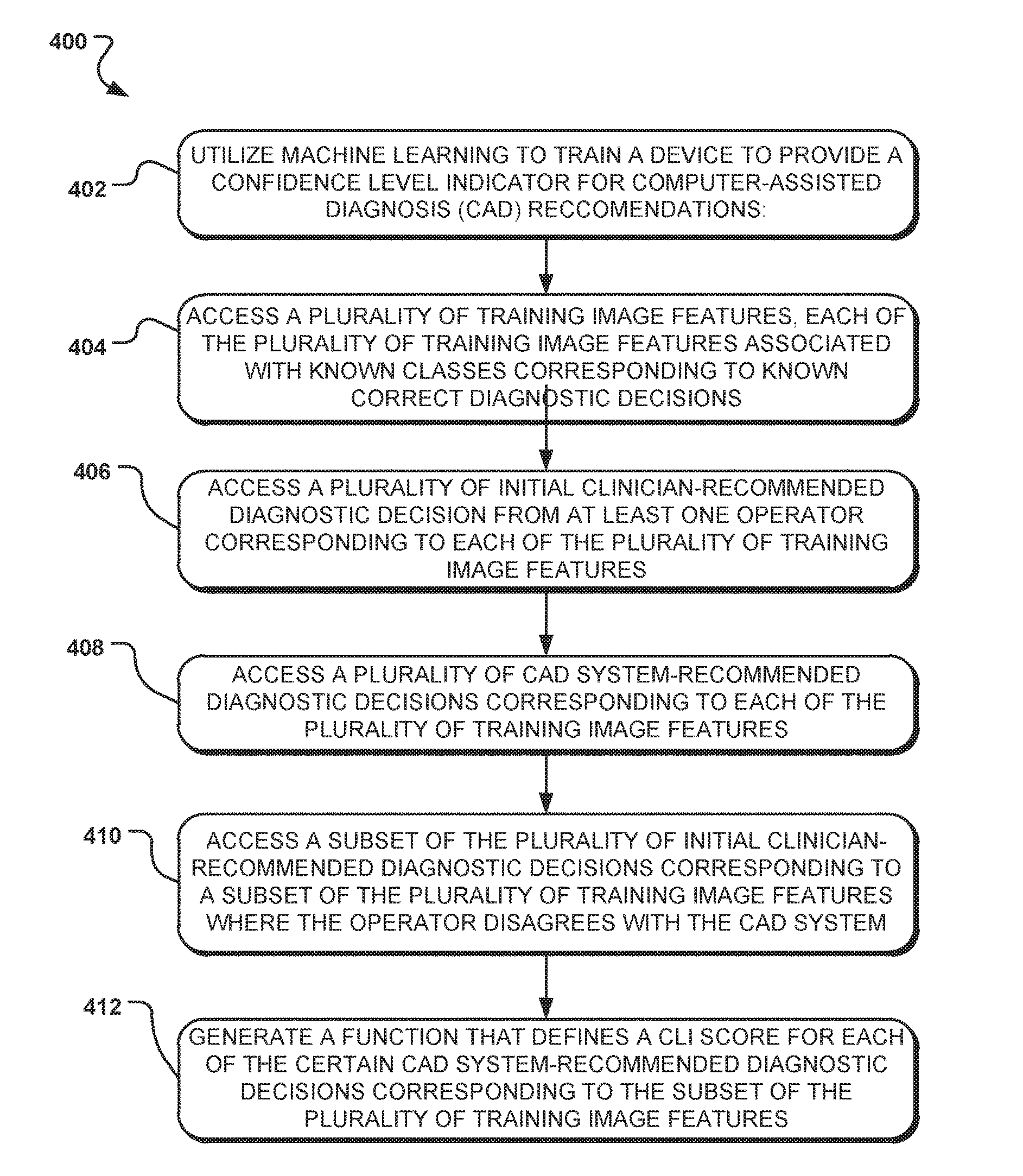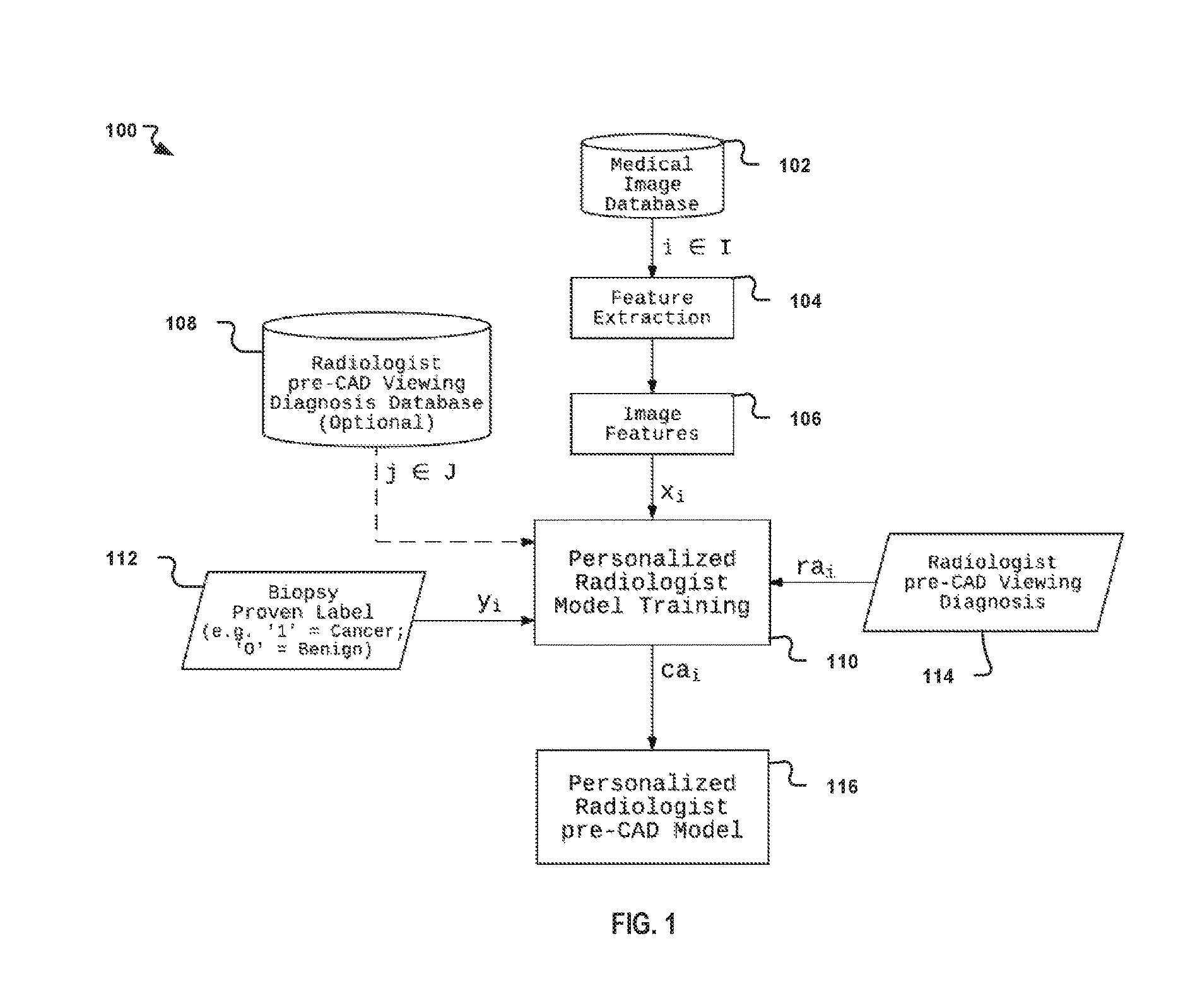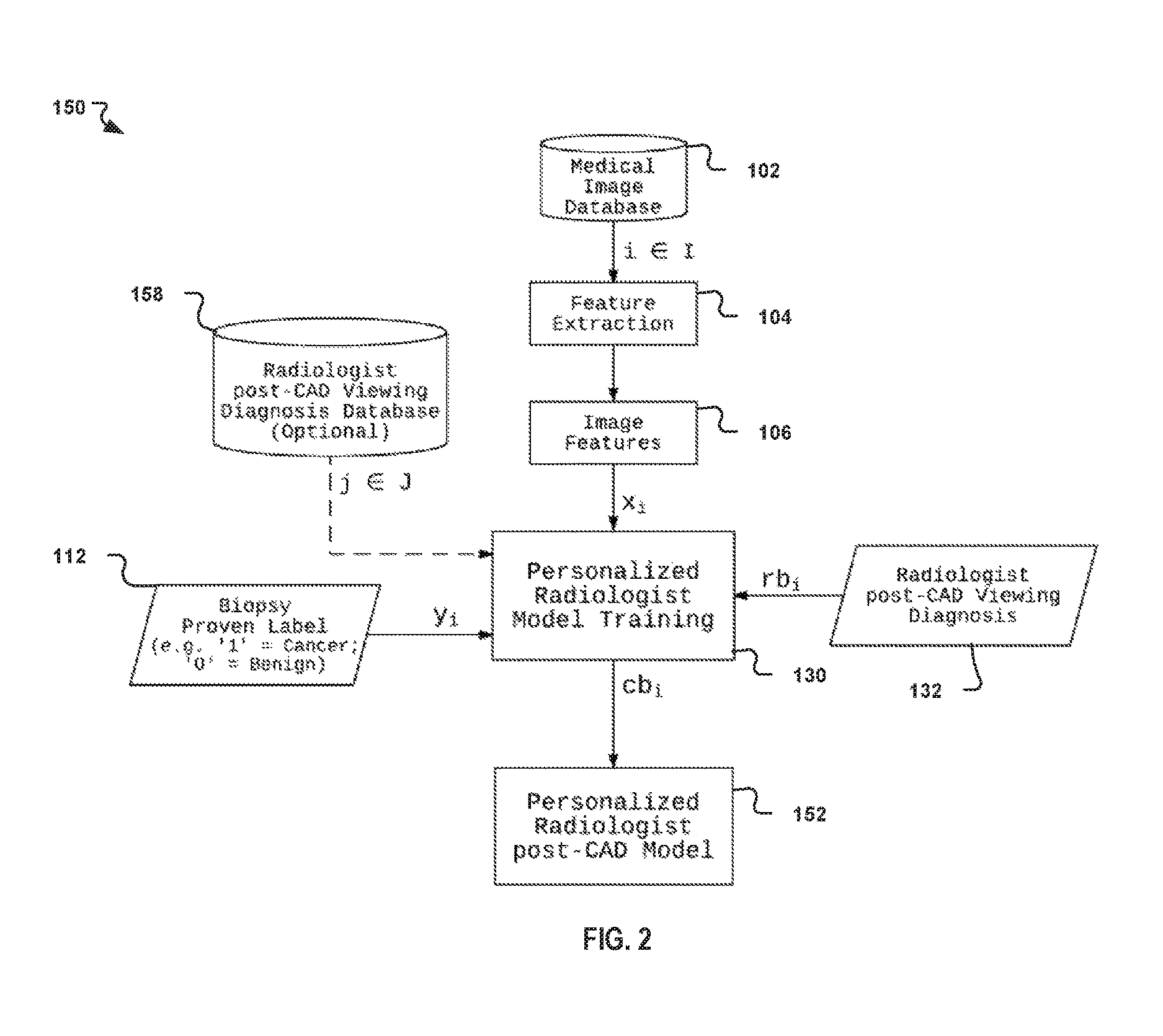Method and means of CAD system personalization to provide a confidence level indicator for CAD system recommendations
a technology of confidence level indicator and cad system, applied in the field of medical imaging and analysis, can solve the problems of poor inter-observer consistency in classification, lack of detailed guidance, and traumatic experience of breast biopsies, and achieve the effect of improving the ability to correctly detect and/or diagnose cancer and better indicating the confidence level of cad system recommendations
- Summary
- Abstract
- Description
- Claims
- Application Information
AI Technical Summary
Benefits of technology
Problems solved by technology
Method used
Image
Examples
Embodiment Construction
[0042]The following detailed description references the accompanying drawings that illustrate various embodiments of the present inventive concept. The illustrations and description are intended to describe aspects and embodiments of the present inventive concept in sufficient detail to enable those skilled in the art to practice the present inventive concept. Other components can be utilized and changes can be made without departing from the scope of the present inventive concept. The following detailed description is, therefore, not to be taken in a limiting sense. The scope of the present inventive concept is defined only by the appended claims, along with the full scope of equivalents to which such claims are entitled.
I. TERMINOLOGY
[0043]In the description, terminology is used to describe features of the present inventive concept. For example, references to terms “one embodiment,”“an embodiment,”“the embodiment,” or “embodiments” mean that the feature or features being referred ...
PUM
 Login to View More
Login to View More Abstract
Description
Claims
Application Information
 Login to View More
Login to View More - R&D
- Intellectual Property
- Life Sciences
- Materials
- Tech Scout
- Unparalleled Data Quality
- Higher Quality Content
- 60% Fewer Hallucinations
Browse by: Latest US Patents, China's latest patents, Technical Efficacy Thesaurus, Application Domain, Technology Topic, Popular Technical Reports.
© 2025 PatSnap. All rights reserved.Legal|Privacy policy|Modern Slavery Act Transparency Statement|Sitemap|About US| Contact US: help@patsnap.com



